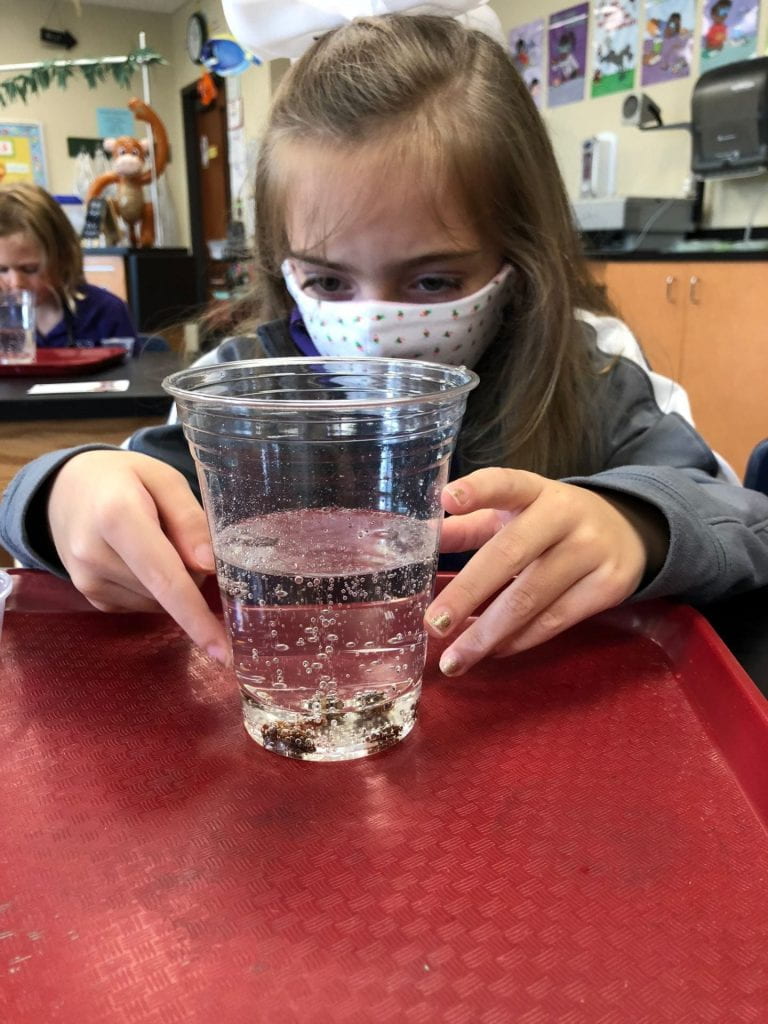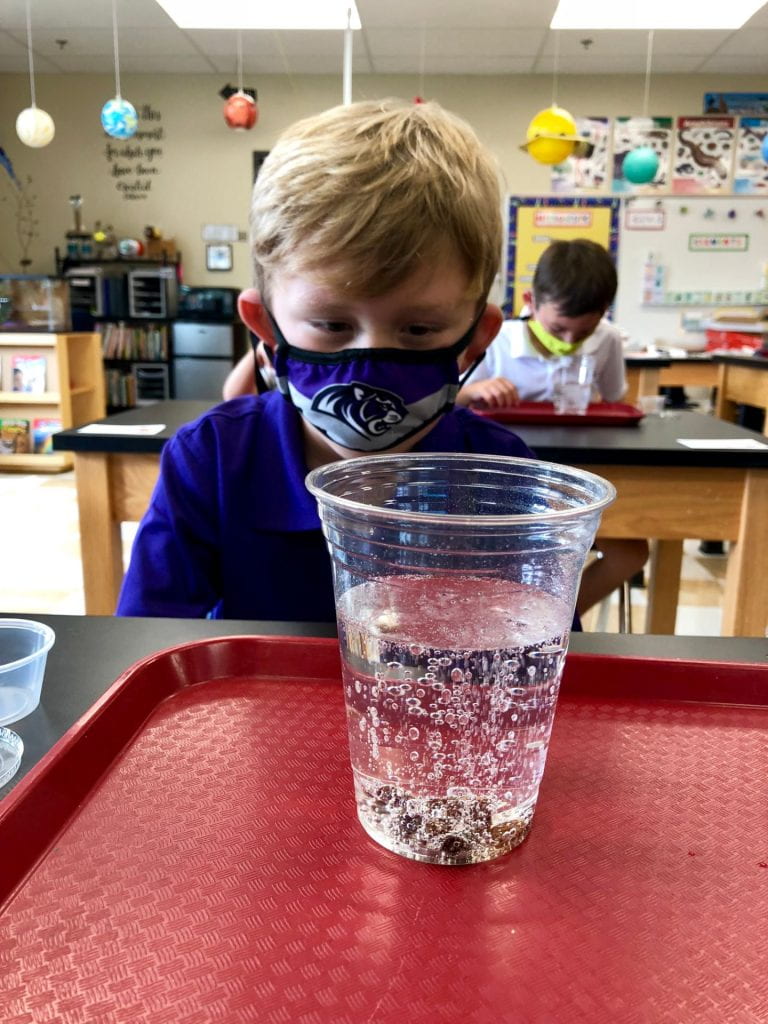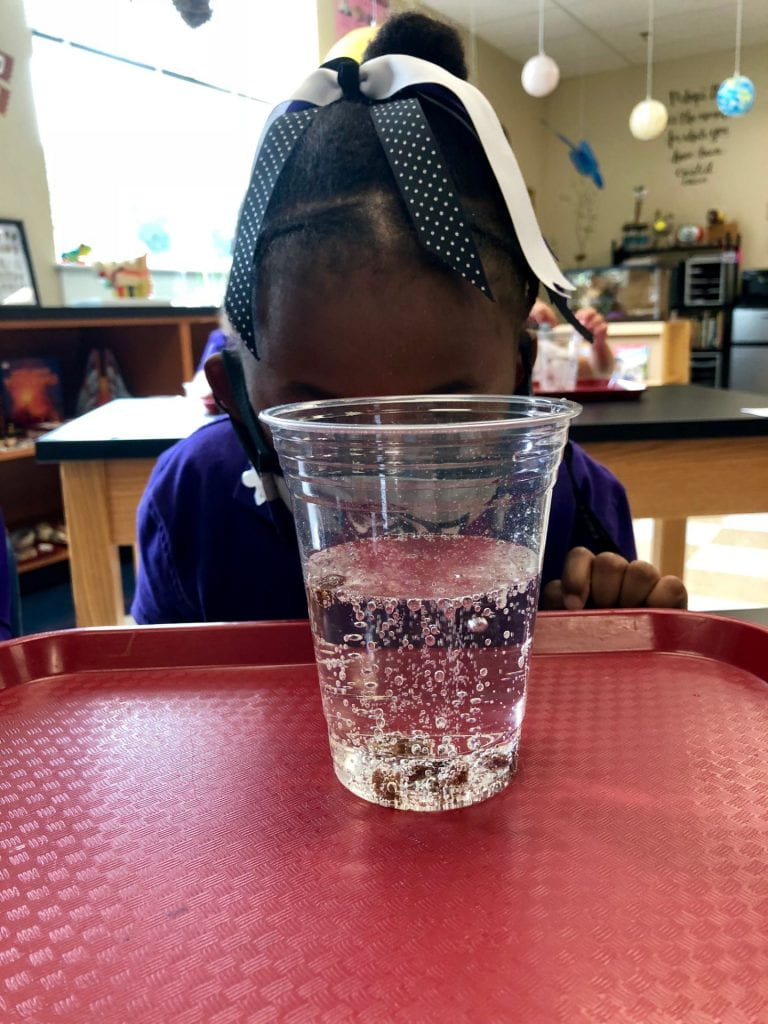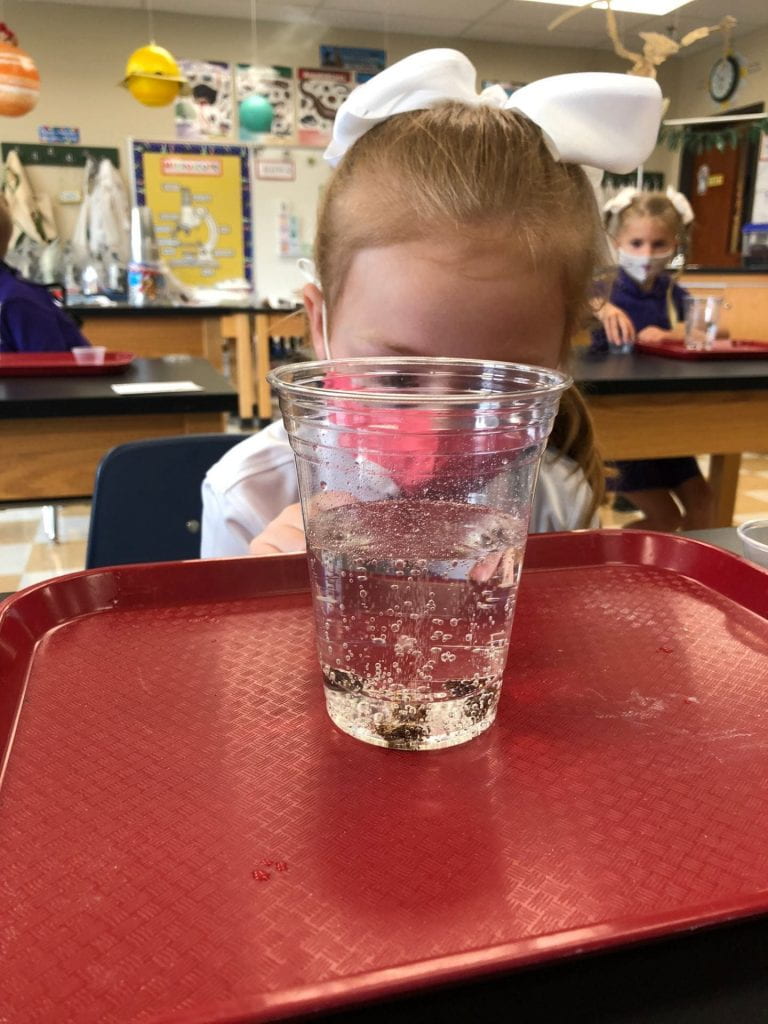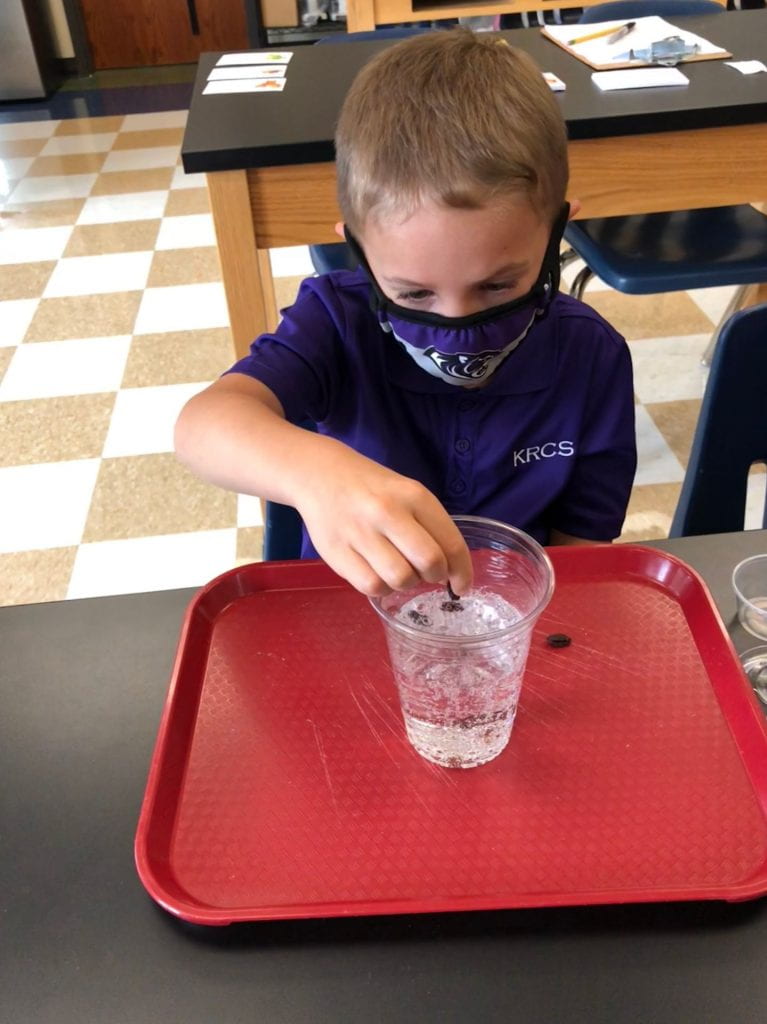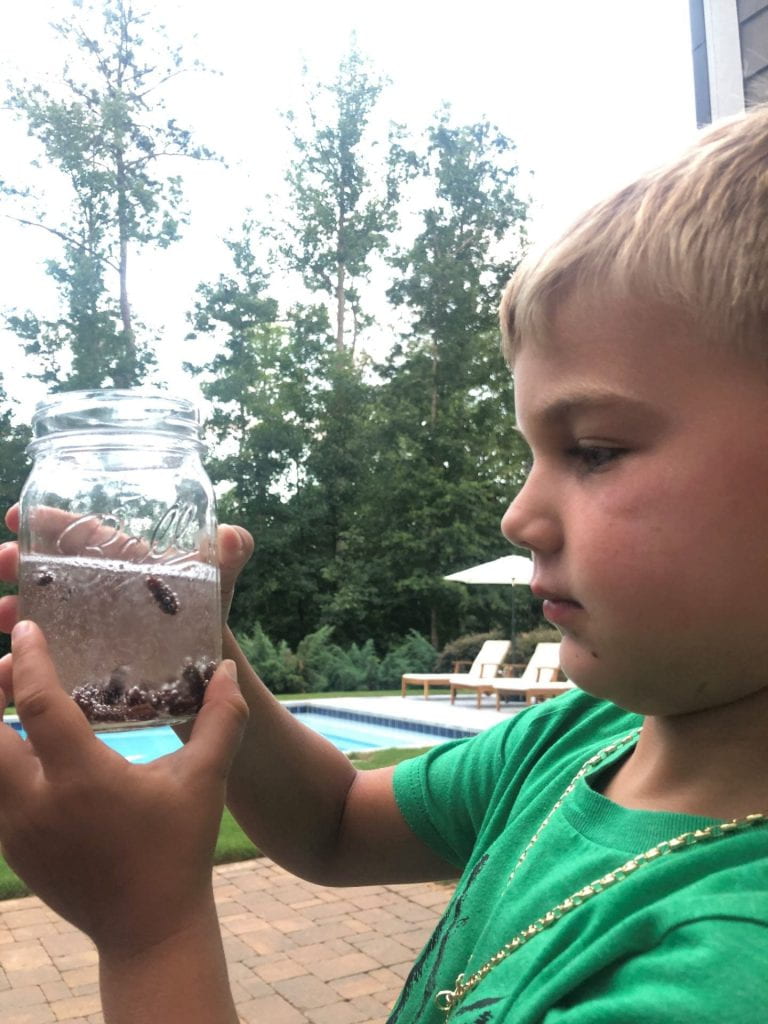Dancing Raisins
First grade chemists reviewed why some objects float, while others sink. Then, I dropped some fresh raisins into tap water and we watched the raisins sink to the bottom of the glass because they were denser than the water. But what would the raisins do if we dropped them in seltzer water or Sprite? As I opened the bottles, we heard a fizzy sound and observed bubbles. I explained that carbonated liquids have carbon dioxide, a gas, in them. The raisins moved up and down in these liquids. Why? Look below for the answer. This is a fun activity to practice observation skills!
Try this investigation at home. Would other carbonated beverages produce different results? Would corn kernels, pasta, or rice dance too? For additional information about this investigation, click here.
The carbon dioxide bubbles attach to the rough surface of the raisins. They act like tiny flotation devices that lift the raisin to the surface of the water. There is an increase in buoyancy. Once the carbon dioxide bubbles reach the surface of the soda they pop, and the gas is released into the air. This makes the raisin lose buoyancy and fall back down to the bottom of the glass. The raisins will continue to rise and fall until the soda is “flat”.
This scientist went home and repeated the experiment!


